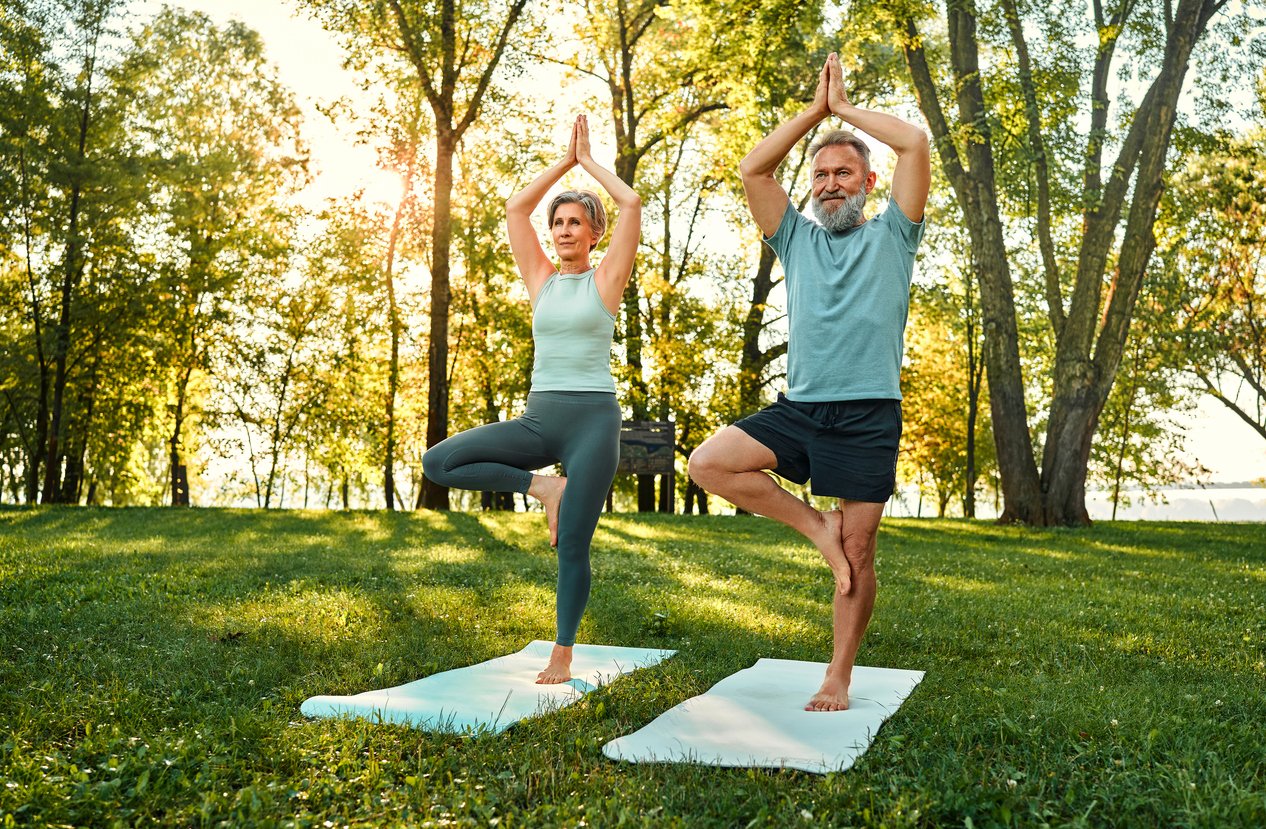HOW EXERCISE CAN HELP REDUCE THE RISK OF FALLS.
Incorporating balance exercises and significantly reduce falls risk.
Is Exercise Important As You Age ?
As we age, the risk of falling becomes a significant concern, especially for older adults. Falls are one of the leading causes of injury and hospitalisation in people over 65, and they can have a lasting impact on health, independence, and quality of life. The good news is that regular exercise can play a pivotal role in reducing the risk of falls by improving strength, balance, coordination, and overall stability. In this blog, we’ll explore how exercise can help lower the chances of falling and which types of exercises are most effective.
For more information about why exercise is important for older adults click here.
The Link Between Falls and Aging
Aging naturally brings about changes in muscle mass, bone density, joint flexibility, and reaction time. These changes can weaken balance and coordination, increasing the likelihood of a fall. Chronic conditions such as arthritis, osteoporosis, and neurological disorders further elevate this risk.
However, physical decline is not inevitable. Many of the factors that contribute to falls can be minimised or even reversed through regular physical activity.
How Exercise Reduces the Risk of Falls
Improves Balance and Coordination
Balance exercises strengthen muscles around the core, hips, and legs, helping to stabilize the body in different positions. Movements like standing on one leg, heel-to-toe walking, or tai chi can improve your sense of balance and reduce the likelihood of stumbling.Strengthens Muscles
Strength training is essential for maintaining muscle mass and power, both of which decline with age. Stronger muscles, particularly in the legs, can help you maintain better control of your body during everyday movements like walking or climbing stairs. Simple exercises like squats, lunges, or resistance band workouts target the key muscle groups that support stability.Increases Flexibility
Flexibility exercises like stretching or yoga can enhance the range of motion in your joints, allowing for smoother movements. This helps prevent stiffness, which is a common contributor to trips and falls. Better flexibility also ensures you can catch yourself more effectively if you do lose balance.Boosts Reaction Time
Quick reflexes can be crucial in preventing a fall. Exercises that challenge speed and coordination, such as agility drills or dancing, can improve your body’s ability to react in moments of imbalance. When your reaction time is faster, you’re more likely to catch yourself before you hit the ground.Improves Bone Health
Weight-bearing exercises like walking, jogging, or using light weights help build bone density. Stronger bones are more resistant to fractures if a fall does occur. Exercises that improve bone strength are particularly important for individuals at risk of osteoporosis.Enhances Postural Stability
Poor posture, often caused by weak core muscles or prolonged sitting, can throw off your balance. Exercises that target posture, like pilates or certain yoga poses, can realign the body and help prevent falls caused by leaning or slouching.
Best Exercises for Fall Prevention
Balance Exercises: Standing on one leg, heel-to-toe walking, tai chi, and single-leg lifts.
Strength Training: Bodyweight exercises like squats and lunges, resistance band training, and light weightlifting.
Flexibility Exercises: Stretching routines, yoga, and dynamic stretches that improve joint mobility.
Cardio Exercises: Walking, swimming, and cycling improve overall endurance and keep the heart and muscles healthy.
Functional Training: Movements that mimic daily activities like getting out of a chair, stepping up onto a curb, or reaching for items overhead.
Resistance training can significantly improve your overall balance.
Tailored Programs for Fall Prevention
It’s important to engage in a well-rounded exercise program that focuses on all aspects of physical health, balance, strength, flexibility, and endurance. For older adults or individuals with medical conditions, it’s recommended to consult with a Exercise Physiologist to create a tailored plan that addresses specific needs and limitations.
Prevent Falls Now
Regular exercise is one of the most effective ways to reduce the risk of falls, especially as we age. By strengthening muscles, improving balance, enhancing flexibility, and boosting reaction times, exercise can help maintain your independence and reduce the likelihood of injury. Remember, it’s never too late to start a fall-prevention exercise routine, and the benefits can be life-changing.
If you’re concerned about your fall risk or unsure where to begin, reach out to an Exercise Physiologist who can help you get started on a safe and effective program tailored to your abilities.
I encourage you to explore our other blogs to discover additional tips to enhance your well-being.
Stay active, stay strong, and take control of your health with JY Exercise Physiology in Upper Mount Gravatt !
Call +61 421 967 711


